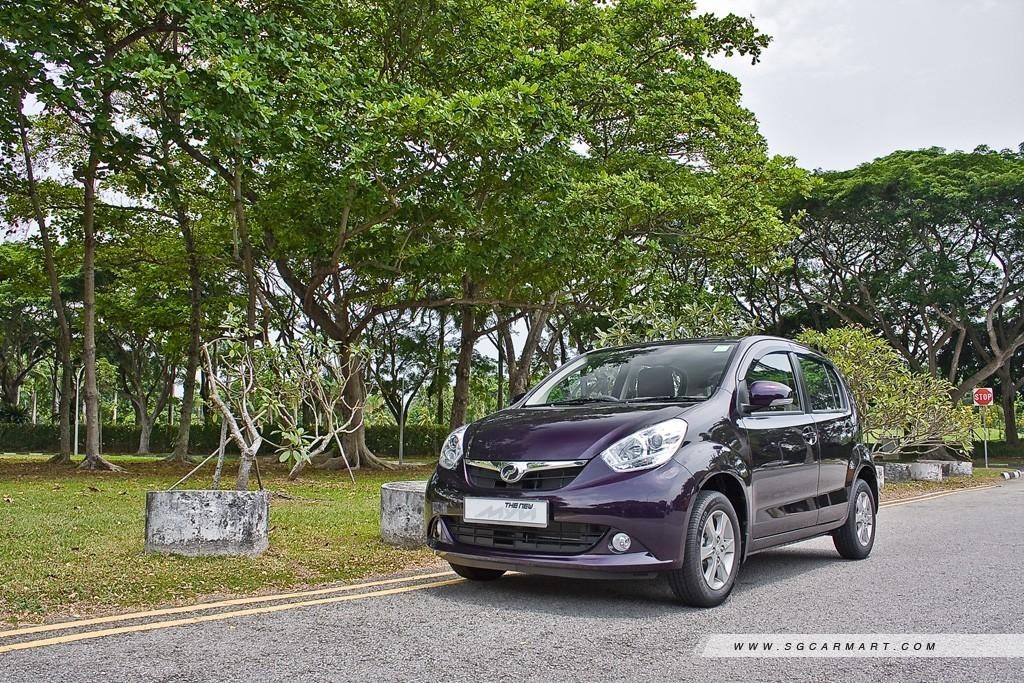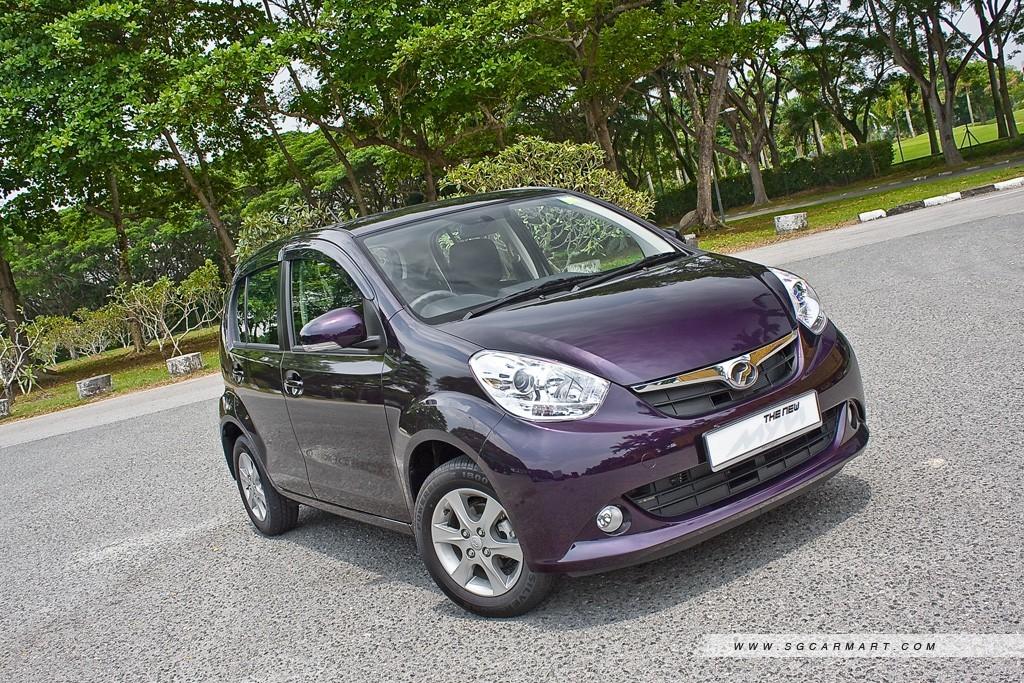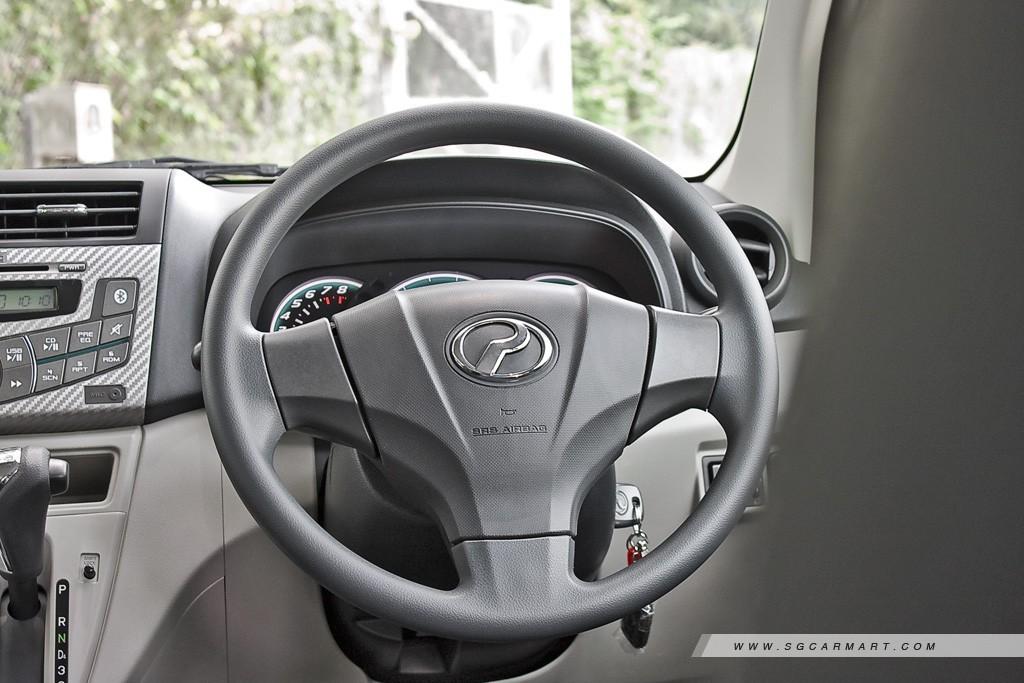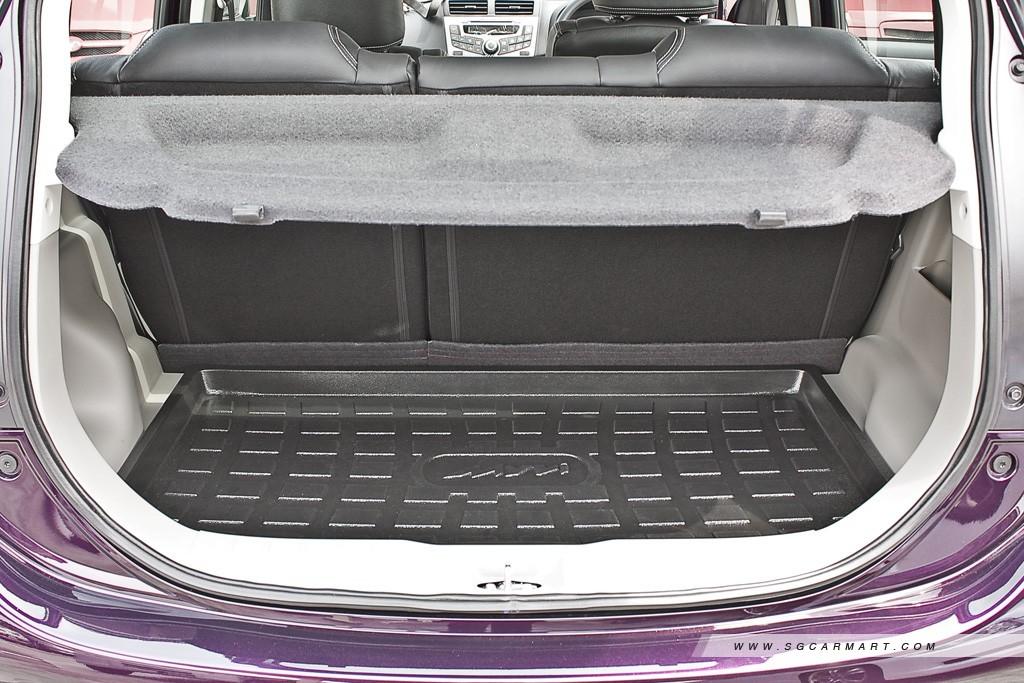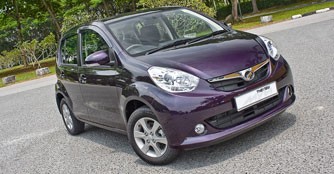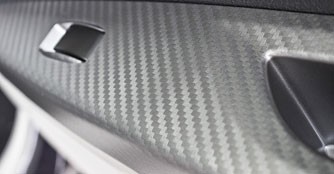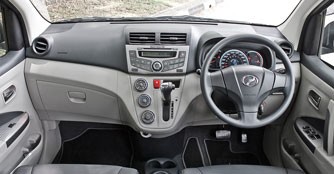Perodua Myvi 1.3 EZi (A) Review
12 Oct 2012|40,933 views
Malaysian carmaker Perodua has saved a fair bit of money creating the Myvi. This is because the hatchback you see here is essentially a Daihatsu Sirion with a different badge. Instead of spending millions of dollars on crash tests and designs to create its very own car, Perodua gave this job to someone else and invested on badging intentions.
Based on the Daihatsu Sirion and Toyota Passo, the Perodua Myvi, in other words, is the result of the carmaker's collaboration with both Daihatsu and Toyota. And to an extent, it succeeded - considering that the car was the best-seller for five consecutive years in Malaysia from 2006 to 2010 - beating even its strongest Malaysian rival, the Proton Savvy.
But faced with tough competition in Singapore, Perodua hasn't been a big hit here. With its target market being small families and drivers looking for their first car, there are better and more reliable brands out there than we care to mention. But we reckon there's one thing we can't deny - the strongest point that brings the Perodua Myvi to the forefront of consumers' choice is its value for money.
Exterior
On first glance, the Myvi may seem very much like its predecessor but when up close and personal to one, you'll notice bolder lines, tweaked headlamps as well as reworked bumpers. While all these changes add more character and poise to the compact hatch, the overall shape hasn't changed, maintaining a high roofline that gives it a similar appearance to a mini MPV.
Based on the Daihatsu Sirion and Toyota Passo, the Perodua Myvi, in other words, is the result of the carmaker's collaboration with both Daihatsu and Toyota. And to an extent, it succeeded - considering that the car was the best-seller for five consecutive years in Malaysia from 2006 to 2010 - beating even its strongest Malaysian rival, the Proton Savvy.
But faced with tough competition in Singapore, Perodua hasn't been a big hit here. With its target market being small families and drivers looking for their first car, there are better and more reliable brands out there than we care to mention. But we reckon there's one thing we can't deny - the strongest point that brings the Perodua Myvi to the forefront of consumers' choice is its value for money.
Exterior
On first glance, the Myvi may seem very much like its predecessor but when up close and personal to one, you'll notice bolder lines, tweaked headlamps as well as reworked bumpers. While all these changes add more character and poise to the compact hatch, the overall shape hasn't changed, maintaining a high roofline that gives it a similar appearance to a mini MPV.
 |
Edges around the car have also 'sharpened', which does make it that less challenging to differentiate between the current model and the older and rounder one. But unlike some successors that constantly boast about lowering their height and increasing their width dimensions (just because it's sportier), the Myvi, as mentioned afore, maintains its dimensions at 3750mm x 1665mm x 1550mm (L x W x H). Although some feel that a change in its shape could do the Myvi some good, we reckon it's a good idea not to mess with a good thing.
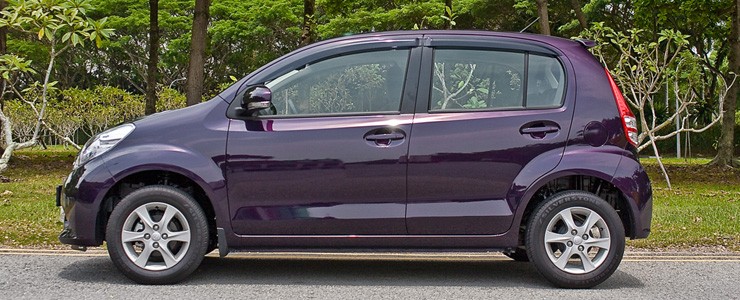 |
Interior
On the inside, the compact hatchback hasn't lost its selling point as well as its essence of what its predecessor had - generous space. There are copious amounts of headroom, thanks to the high roofline, and more than adequate legroom, credit going to the wheelbase of 2,440mm. You could seriously consider having five full adults in the car.
On top of that, the dashboard receives some sporty treatment. Apart from the two-tone dash, silver carbon fibre stickers on the centre console as well as window controls on arm rests of the doors uplift the entire atmosphere of the cabin
There is no doubt that the entire cabin feels plasticky to the touch and it does look dreadfully cheap. But we can't deny that everything seems to be well fitted together, with the lack of sharp edges and wrong alignments between gaps.
On the inside, the compact hatchback hasn't lost its selling point as well as its essence of what its predecessor had - generous space. There are copious amounts of headroom, thanks to the high roofline, and more than adequate legroom, credit going to the wheelbase of 2,440mm. You could seriously consider having five full adults in the car.
On top of that, the dashboard receives some sporty treatment. Apart from the two-tone dash, silver carbon fibre stickers on the centre console as well as window controls on arm rests of the doors uplift the entire atmosphere of the cabin
There is no doubt that the entire cabin feels plasticky to the touch and it does look dreadfully cheap. But we can't deny that everything seems to be well fitted together, with the lack of sharp edges and wrong alignments between gaps.
What's more is that the Myvi, unlike some of the bigger and more expensive hatchbacks in the market, comes with a comprehensive list of equipment. There's Bluetooth, USB port for your MP3 connectivity and even electric side mirrors. It may be a basic cabin but its controls and dials are all clear and highly functional while a range of useful cubby holes make good storage for your 'barang barang'.
 |
The Drive
Mated to a 4-speed automatic transmission, the 1.3-litre powerplant that churns out a maximum of 85 ponies and 116Nm of torque is the only option on offer in Singapore. But despite the car's small figures, the engine is a surprisingly lively and peppy unit, making it a suitable car to nip in and out of traffic with ease around town.
That's not to say that it's out of its depth on the highway. It is capable of keeping up with the flow, although you'll need to hope for a long stretch of clear road if you're planning to overtake. And when it gets up to speed, external noises intrude the cabin, making it somewhat a tedious environment when you're door-handling the car at faster speeds.
While the Perodua Myvi is a relatively easy car to drive and manoeuvre around tighter spaces, it doesn't inspire confidence in bends, no thanks to the poorly modulated brakes and light steering. It ultimately leads to unpredictability around sharper corners. But on the bright side, the compact hatch has a fairly comfortable ride, soaking up minor lumps and bumps on the road without fuss.
Mated to a 4-speed automatic transmission, the 1.3-litre powerplant that churns out a maximum of 85 ponies and 116Nm of torque is the only option on offer in Singapore. But despite the car's small figures, the engine is a surprisingly lively and peppy unit, making it a suitable car to nip in and out of traffic with ease around town.
That's not to say that it's out of its depth on the highway. It is capable of keeping up with the flow, although you'll need to hope for a long stretch of clear road if you're planning to overtake. And when it gets up to speed, external noises intrude the cabin, making it somewhat a tedious environment when you're door-handling the car at faster speeds.
While the Perodua Myvi is a relatively easy car to drive and manoeuvre around tighter spaces, it doesn't inspire confidence in bends, no thanks to the poorly modulated brakes and light steering. It ultimately leads to unpredictability around sharper corners. But on the bright side, the compact hatch has a fairly comfortable ride, soaking up minor lumps and bumps on the road without fuss.
Conclusion
At $88,999 (as of 5th Oct 2012), the Perodua Myvi may not be a justifiable choice of ride, especially if you're looking for any trace of desirability. But what it does have is practicality. It will fit up to five passengers, and it comes with a decent level of equipment.
The Myvi isn't as relaxing as its competitors in its segment, but it does give you a feeling of rugged reliability which is definitely comparable with some of its peers.
At $88,999 (as of 5th Oct 2012), the Perodua Myvi may not be a justifiable choice of ride, especially if you're looking for any trace of desirability. But what it does have is practicality. It will fit up to five passengers, and it comes with a decent level of equipment.
The Myvi isn't as relaxing as its competitors in its segment, but it does give you a feeling of rugged reliability which is definitely comparable with some of its peers.
Malaysian carmaker Perodua has saved a fair bit of money creating the Myvi. This is because the hatchback you see here is essentially a Daihatsu Sirion with a different badge. Instead of spending millions of dollars on crash tests and designs to create its very own car, Perodua gave this job to someone else and invested on badging intentions.
Based on the Daihatsu Sirion and Toyota Passo, the Perodua Myvi, in other words, is the result of the carmaker's collaboration with both Daihatsu and Toyota. And to an extent, it succeeded - considering that the car was the best-seller for five consecutive years in Malaysia from 2006 to 2010 - beating even its strongest Malaysian rival, the Proton Savvy.
But faced with tough competition in Singapore, Perodua hasn't been a big hit here. With its target market being small families and drivers looking for their first car, there are better and more reliable brands out there than we care to mention. But we reckon there's one thing we can't deny - the strongest point that brings the Perodua Myvi to the forefront of consumers' choice is its value for money.
Exterior
On first glance, the Myvi may seem very much like its predecessor but when up close and personal to one, you'll notice bolder lines, tweaked headlamps as well as reworked bumpers. While all these changes add more character and poise to the compact hatch, the overall shape hasn't changed, maintaining a high roofline that gives it a similar appearance to a mini MPV.
Based on the Daihatsu Sirion and Toyota Passo, the Perodua Myvi, in other words, is the result of the carmaker's collaboration with both Daihatsu and Toyota. And to an extent, it succeeded - considering that the car was the best-seller for five consecutive years in Malaysia from 2006 to 2010 - beating even its strongest Malaysian rival, the Proton Savvy.
But faced with tough competition in Singapore, Perodua hasn't been a big hit here. With its target market being small families and drivers looking for their first car, there are better and more reliable brands out there than we care to mention. But we reckon there's one thing we can't deny - the strongest point that brings the Perodua Myvi to the forefront of consumers' choice is its value for money.
Exterior
On first glance, the Myvi may seem very much like its predecessor but when up close and personal to one, you'll notice bolder lines, tweaked headlamps as well as reworked bumpers. While all these changes add more character and poise to the compact hatch, the overall shape hasn't changed, maintaining a high roofline that gives it a similar appearance to a mini MPV.
Edges around the car have also 'sharpened', which does make it that less challenging to differentiate between the current model and the older and rounder one. But unlike some successors that constantly boast about lowering their height and increasing their width dimensions (just because it's sportier), the Myvi, as mentioned afore, maintains its dimensions at 3750mm x 1665mm x 1550mm (L x W x H). Although some feel that a change in its shape could do the Myvi some good, we reckon it's a good idea not to mess with a good thing.
Interior
On the inside, the compact hatchback hasn't lost its selling point as well as its essence of what its predecessor had - generous space. There are copious amounts of headroom, thanks to the high roofline, and more than adequate legroom, credit going to the wheelbase of 2,440mm. You could seriously consider having five full adults in the car.
On top of that, the dashboard receives some sporty treatment. Apart from the two-tone dash, silver carbon fibre stickers on the centre console as well as window controls on arm rests of the doors uplift the entire atmosphere of the cabin
There is no doubt that the entire cabin feels plasticky to the touch and it does look dreadfully cheap. But we can't deny that everything seems to be well fitted together, with the lack of sharp edges and wrong alignments between gaps.
On the inside, the compact hatchback hasn't lost its selling point as well as its essence of what its predecessor had - generous space. There are copious amounts of headroom, thanks to the high roofline, and more than adequate legroom, credit going to the wheelbase of 2,440mm. You could seriously consider having five full adults in the car.
On top of that, the dashboard receives some sporty treatment. Apart from the two-tone dash, silver carbon fibre stickers on the centre console as well as window controls on arm rests of the doors uplift the entire atmosphere of the cabin
There is no doubt that the entire cabin feels plasticky to the touch and it does look dreadfully cheap. But we can't deny that everything seems to be well fitted together, with the lack of sharp edges and wrong alignments between gaps.
What's more is that the Myvi, unlike some of the bigger and more expensive hatchbacks in the market, comes with a comprehensive list of equipment. There's Bluetooth, USB port for your MP3 connectivity and even electric side mirrors. It may be a basic cabin but its controls and dials are all clear and highly functional while a range of useful cubby holes make good storage for your 'barang barang'.
The Drive
Mated to a 4-speed automatic transmission, the 1.3-litre powerplant that churns out a maximum of 85 ponies and 116Nm of torque is the only option on offer in Singapore. But despite the car's small figures, the engine is a surprisingly lively and peppy unit, making it a suitable car to nip in and out of traffic with ease around town.
That's not to say that it's out of its depth on the highway. It is capable of keeping up with the flow, although you'll need to hope for a long stretch of clear road if you're planning to overtake. And when it gets up to speed, external noises intrude the cabin, making it somewhat a tedious environment when you're door-handling the car at faster speeds.
While the Perodua Myvi is a relatively easy car to drive and manoeuvre around tighter spaces, it doesn't inspire confidence in bends, no thanks to the poorly modulated brakes and light steering. It ultimately leads to unpredictability around sharper corners. But on the bright side, the compact hatch has a fairly comfortable ride, soaking up minor lumps and bumps on the road without fuss.
Mated to a 4-speed automatic transmission, the 1.3-litre powerplant that churns out a maximum of 85 ponies and 116Nm of torque is the only option on offer in Singapore. But despite the car's small figures, the engine is a surprisingly lively and peppy unit, making it a suitable car to nip in and out of traffic with ease around town.
That's not to say that it's out of its depth on the highway. It is capable of keeping up with the flow, although you'll need to hope for a long stretch of clear road if you're planning to overtake. And when it gets up to speed, external noises intrude the cabin, making it somewhat a tedious environment when you're door-handling the car at faster speeds.
While the Perodua Myvi is a relatively easy car to drive and manoeuvre around tighter spaces, it doesn't inspire confidence in bends, no thanks to the poorly modulated brakes and light steering. It ultimately leads to unpredictability around sharper corners. But on the bright side, the compact hatch has a fairly comfortable ride, soaking up minor lumps and bumps on the road without fuss.
Conclusion
At $88,999 (as of 5th Oct 2012), the Perodua Myvi may not be a justifiable choice of ride, especially if you're looking for any trace of desirability. But what it does have is practicality. It will fit up to five passengers, and it comes with a decent level of equipment.
The Myvi isn't as relaxing as its competitors in its segment, but it does give you a feeling of rugged reliability which is definitely comparable with some of its peers.
At $88,999 (as of 5th Oct 2012), the Perodua Myvi may not be a justifiable choice of ride, especially if you're looking for any trace of desirability. But what it does have is practicality. It will fit up to five passengers, and it comes with a decent level of equipment.
The Myvi isn't as relaxing as its competitors in its segment, but it does give you a feeling of rugged reliability which is definitely comparable with some of its peers.
Car Information
Perodua Myvi 1.3 EZi (A)
CAT A|Petrol|16.3km/L
Horsepower
63kW (85 bhp)
Torque
116 Nm
Acceleration
-
This model is no longer being sold by local distributor
All Used Perodua MyviThank You For Your Subscription.



